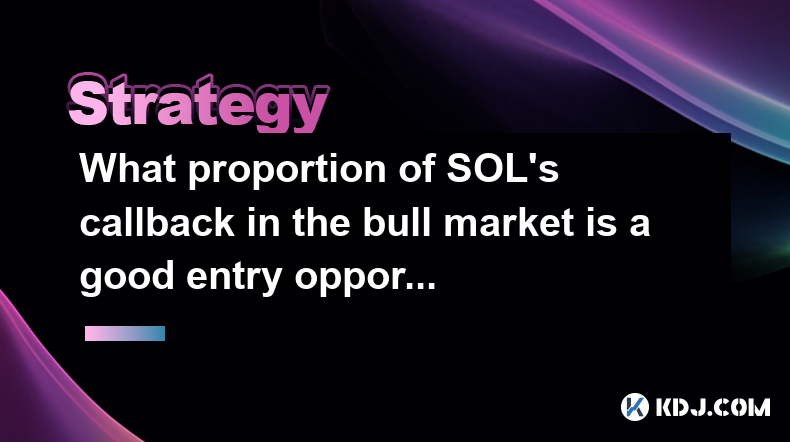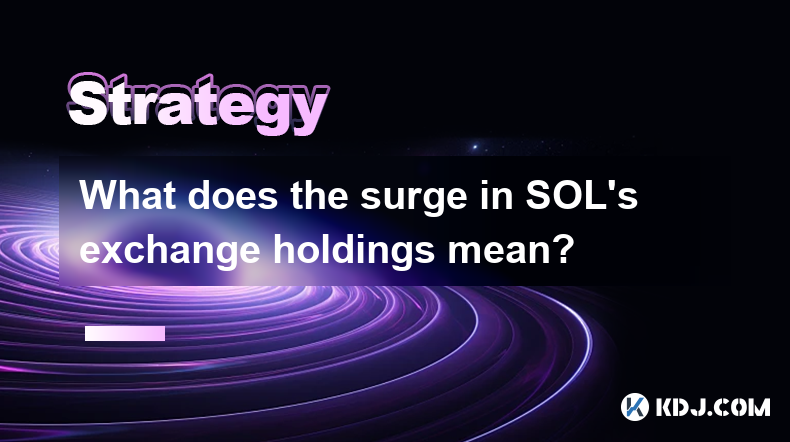-
 Bitcoin
Bitcoin $88,555.6766
1.18% -
 Ethereum
Ethereum $1,626.4043
-1.22% -
 Tether USDt
Tether USDt $0.9998
-0.01% -
 XRP
XRP $2.1018
-1.27% -
 BNB
BNB $605.8750
0.04% -
 Solana
Solana $140.3422
0.04% -
 USDC
USDC $0.9999
0.00% -
 Dogecoin
Dogecoin $0.1643
1.27% -
 TRON
TRON $0.2481
1.05% -
 Cardano
Cardano $0.6359
-1.63% -
 Chainlink
Chainlink $13.3216
-2.53% -
 UNUS SED LEO
UNUS SED LEO $9.1797
-2.79% -
 Avalanche
Avalanche $20.3681
-2.52% -
 Stellar
Stellar $0.2473
-4.43% -
 Sui
Sui $2.3043
2.50% -
 Shiba Inu
Shiba Inu $0.0...01257
-1.15% -
 Toncoin
Toncoin $2.9429
-3.48% -
 Hedera
Hedera $0.1738
0.16% -
 Bitcoin Cash
Bitcoin Cash $347.0587
1.49% -
 Hyperliquid
Hyperliquid $18.2576
-0.35% -
 Litecoin
Litecoin $79.8456
-0.89% -
 Polkadot
Polkadot $3.7809
-4.73% -
 Dai
Dai $0.9999
-0.01% -
 Bitget Token
Bitget Token $4.4439
-0.50% -
 Ethena USDe
Ethena USDe $0.9991
-0.01% -
 Pi
Pi $0.6313
-0.96% -
 Monero
Monero $216.2035
0.57% -
 Pepe
Pepe $0.0...08138
3.46% -
 Uniswap
Uniswap $5.3889
-1.68% -
 OKB
OKB $50.9281
-0.23%
How to utilize cross-market arbitrage strategies in Ethereum trading?
Cross-market arbitrage in Ethereum trading involves exploiting price discrepancies between cryptocurrency exchanges by buying low and selling high, enabling traders to profit from the price gap.
Feb 25, 2025 at 06:54 pm

Key Points:
- Understanding Cross-Market Arbitrage in Ethereum Trading
- Identifying Arbitrage Opportunities in Different Markets
- Executing Cross-Market Arbitrage Trades
- Managing Risks and Maximizing Profits
- Legal and Regulatory Considerations for Cross-Market Arbitrage
How to Utilize Cross-Market Arbitrage Strategies in Ethereum Trading?
Cross-market arbitrage is a trading strategy that exploits price discrepancies or inefficiencies between different cryptocurrency exchanges or markets. By buying Ethereum on one exchange at a lower price and selling it on another exchange at a higher price, traders can profit from the price difference. However, cross-market arbitrage can be a complex and risky strategy, so it's important to understand the steps involved and the potential risks.
Step 1: Understanding Cross-Market Arbitrage
The first step is to understand how cross-market arbitrage works. When an asset, such as Ethereum, is traded on multiple exchanges or markets, it's possible for the price to vary slightly between those markets. This price difference can be caused by a variety of factors, such as supply and demand imbalances, trading fees, and market liquidity. Arbitrageurs exploit these price differences by buying Ethereum on the exchange where it's cheaper and selling it on the exchange where it's more expensive.
Step 2: Identifying Arbitrage Opportunities
The next step is to identify arbitrage opportunities. Arbitrageurs use a combination of automated trading tools and manual research to find profitable price discrepancies. Automated trading tools scan multiple exchanges in real-time, looking for opportunities to buy and sell at different prices. Manual research involves monitoring market news, order books, and trading charts to identify potential arbitrage opportunities.
Step 3: Executing Cross-Market Arbitrage Trades
Once an arbitrage opportunity is identified, the trader must execute the trade quickly and efficiently to minimize the risk of the price difference disappearing. This involves placing buy and sell orders on the respective exchanges at the appropriate price. It's important to manage trading fees and slippage, which can erode profits and impact the overall profitability of the trade.
Step 4: Managing Risks and Maximizing Profits
Cross-market arbitrage can be a profitable trading strategy, but it also carries certain risks. The most common risks are market fluctuations, trading fees, and exchange downtime. Arbitrageurs can minimize these risks by diversifying their trades, managing their positions carefully, and staying informed about market news. Maximizing profits involves finding more profitable arbitrage opportunities, optimizing trade execution, and managing risks effectively.
Step 5: Legal and Regulatory Considerations
Finally, it's important to consider the legal and regulatory implications of cross-market arbitrage. In many jurisdictions, arbitrage is considered a legitimate trading strategy. However, it's crucial for arbitrageurs to comply with all applicable laws and regulations in the countries where they operate. These laws can include regulations governing the use of trading bots, anti-money laundering, and tax reporting requirements. Arbitrageurs must also adhere to the terms of service set by the various exchanges they trade on.
FAQs:
Q: What are some examples of cross-market arbitrage in Ethereum trading?
- Buying Ethereum on Coinbase at $2,500 and selling it on Binance at $2,520.
- Buying Ethereum on Kraken at €2,300 and selling it on Huobi at €2,340.
- Buying Ethereum on Binance Futures at $2,480 and selling it on BitMEX at $2,490.
Q: How can I avoid pitfalls when executing cross-market arbitrage trades?
- Manage trading fees and slippage to minimize the impact on profit.
- Stay informed about market news and monitor trading charts to anticipate price movements.
- Use automated trading tools to scan multiple exchanges and execute trades quickly.
- Diversify trades and manage positions to reduce the impact of market fluctuations.
Q: Are there any legal or regulatory considerations for cross-market arbitrage?
- Arbitrage is generally considered a legitimate trading strategy.
- Comply with all applicable laws and regulations in the relevant jurisdictions.
- Understand the terms of service of the exchanges being used.
- Maintain compliance with anti-money laundering regulations.
Q: How can I find profitable cross-market arbitrage opportunities?
- Use automated trading tools to scan multiple exchanges in real-time.
- Monitor market news, order books, and trading charts to identify price discrepancies.
- Build relationships with other traders and stay informed about trading conditions.
- Study market trends and technical analysis to anticipate price movements.
Disclaimer:info@kdj.com
The information provided is not trading advice. kdj.com does not assume any responsibility for any investments made based on the information provided in this article. Cryptocurrencies are highly volatile and it is highly recommended that you invest with caution after thorough research!
If you believe that the content used on this website infringes your copyright, please contact us immediately (info@kdj.com) and we will delete it promptly.
- U.S. Digital Asset Firms Are Reportedly Considering Applying for Bank Charters and Licenses
- 2025-04-22 15:40:12
- OM Slides Deeper as Massive Token Burn Falls Flat
- 2025-04-22 15:40:12
- Ethereum Crashes, Its Share of the Overall Virtual Asset Market Fell Below 7%
- 2025-04-22 15:35:12
- Dogecoin Community Celebrates Dogeday 4/20, Buoyed by ETF Filing Buzz
- 2025-04-22 15:35:12
- ZetaChain Integrates Arbitrum to Offer Streamlined Universal App Usage
- 2025-04-22 15:30:12
- Deutsche Bank and Standard Chartered Are Expanding Their Crypto Operations in the United States
- 2025-04-22 15:30:12
Related knowledge

How to use trading volume to determine the buying and selling timing of BCH?
Apr 22,2025 at 04:14pm
Trading volume is a critical indicator that traders use to gauge the strength and direction of market trends, and it can be particularly useful when determining the buying and selling timing of Bitcoin Cash (BCH). By analyzing the trading volume, investors can gain insights into the market sentiment and make more informed decisions about when to enter o...

What proportion of SOL's callback in the bull market is a good entry opportunity?
Apr 22,2025 at 03:43pm
The question of what proportion of SOL's callback in a bull market represents a good entry opportunity is a nuanced one, requiring a deep dive into market dynamics, historical data, and risk management strategies. Let's explore this topic in detail. Understanding SOL and Bull MarketsSolana (SOL) is a high-performance blockchain platform known for its fa...

Can BCH's Willy indicator be bottomed out in the oversold area?
Apr 22,2025 at 02:56pm
Understanding the Willy IndicatorThe Willy indicator, also known as the Willy ratio, is a technical analysis tool used in the cryptocurrency market to assess the potential for a price reversal. It is calculated by dividing the current price of a cryptocurrency by its 200-day moving average. When the Willy indicator falls into the oversold area, it sugge...

What does the surge in SOL's exchange holdings mean?
Apr 22,2025 at 04:07pm
The recent surge in SOL's exchange holdings has sparked considerable interest and debate within the cryptocurrency community. SOL, the native token of the Solana blockchain, has seen a notable increase in the amount of tokens held on various cryptocurrency exchanges. This phenomenon can have several implications for the token's price, market sentiment, ...

What to do if SHIB's HODL wave indicator shows loose chips?
Apr 21,2025 at 03:07pm
If the SHIB's HODL wave indicator shows loose chips, it suggests that a significant portion of the SHIB holders are selling their tokens, potentially leading to increased volatility and a possible price drop. Understanding how to navigate this situation is crucial for any SHIB investor. This article will guide you through the steps to take when you noti...

Is it a risk that SHIB's derivatives position is 3 times that of the spot?
Apr 20,2025 at 12:35am
Is it a risk that SHIB's derivatives position is 3 times that of the spot? The cryptocurrency market is known for its volatility and high-risk nature, and Shiba Inu (SHIB) is no exception. One of the metrics that traders and investors closely monitor is the ratio of derivatives to spot positions. SHIB's derivatives position being three times that of the...

How to use trading volume to determine the buying and selling timing of BCH?
Apr 22,2025 at 04:14pm
Trading volume is a critical indicator that traders use to gauge the strength and direction of market trends, and it can be particularly useful when determining the buying and selling timing of Bitcoin Cash (BCH). By analyzing the trading volume, investors can gain insights into the market sentiment and make more informed decisions about when to enter o...

What proportion of SOL's callback in the bull market is a good entry opportunity?
Apr 22,2025 at 03:43pm
The question of what proportion of SOL's callback in a bull market represents a good entry opportunity is a nuanced one, requiring a deep dive into market dynamics, historical data, and risk management strategies. Let's explore this topic in detail. Understanding SOL and Bull MarketsSolana (SOL) is a high-performance blockchain platform known for its fa...

Can BCH's Willy indicator be bottomed out in the oversold area?
Apr 22,2025 at 02:56pm
Understanding the Willy IndicatorThe Willy indicator, also known as the Willy ratio, is a technical analysis tool used in the cryptocurrency market to assess the potential for a price reversal. It is calculated by dividing the current price of a cryptocurrency by its 200-day moving average. When the Willy indicator falls into the oversold area, it sugge...

What does the surge in SOL's exchange holdings mean?
Apr 22,2025 at 04:07pm
The recent surge in SOL's exchange holdings has sparked considerable interest and debate within the cryptocurrency community. SOL, the native token of the Solana blockchain, has seen a notable increase in the amount of tokens held on various cryptocurrency exchanges. This phenomenon can have several implications for the token's price, market sentiment, ...

What to do if SHIB's HODL wave indicator shows loose chips?
Apr 21,2025 at 03:07pm
If the SHIB's HODL wave indicator shows loose chips, it suggests that a significant portion of the SHIB holders are selling their tokens, potentially leading to increased volatility and a possible price drop. Understanding how to navigate this situation is crucial for any SHIB investor. This article will guide you through the steps to take when you noti...

Is it a risk that SHIB's derivatives position is 3 times that of the spot?
Apr 20,2025 at 12:35am
Is it a risk that SHIB's derivatives position is 3 times that of the spot? The cryptocurrency market is known for its volatility and high-risk nature, and Shiba Inu (SHIB) is no exception. One of the metrics that traders and investors closely monitor is the ratio of derivatives to spot positions. SHIB's derivatives position being three times that of the...
See all articles























































































